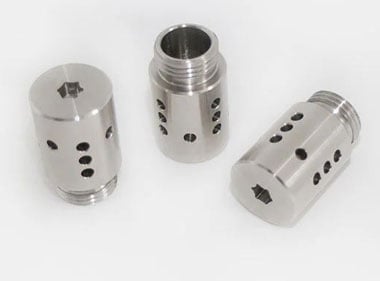When we were children, fuel was relatively inexpensive in a galaxy not far away from our own. Because the vehicles were large and inefficient, it was difficult to maneuver around them. Structures constructed primarily of iron were heavy and immobile due to the use of heavy and immobile devices during the construction process. All of that happened yesterday; today, everything is completely different from then. When it comes to energy costs, vehicles are becoming smaller and lighter, our devices are becoming smaller and lighter, iron is becoming something that you pump as part of your exercise routine, and the list goes on. Because of our ever-increasing demands for economy and portability, aluminum and plastic, as well as magnesium, have been gradually replacing iron in order to meet those demands, which are becoming increasingly difficult to meet.

Magnesium is used in a variety of different applications.
A growing number of applications, particularly those in which magnesium-based products can help to reduce energy consumption, have sprung up as a result of the growing popularity and use of magnesium-based products in general. Aerospace-grade titanium is used in the production of engines, airframes, and other internal components for use in the aerospace industry. A variety of automotive applications, including steering components, seat and sunroof tracks, interior frames, as well as magnet wheels and other magnetic components, rely on this material for their functionality. Recent applications include the manufacture of automobile roof, hood, and rear-deck lids, as well as manifolds, cylinder head covers, and oil pans for these automobiles, among others. Even engine blocks are being investigated for possible use with the substance, according to the company. The use of magnesium in motorcycle and bicycle components such as lightweight frames is becoming increasingly popular for the same reasons. Magnesium can be found in significant quantities in a variety of consumer products, including laptop computers, cell phones, digital cameras, power tools, and sporting goods, among other things. Hand-held communication devices, night-vision equipment, and robotics are just a few examples of how technology is used in the military.
This is something I've decided to do for a good reason. Magnesium is widely available and simple to manufacture due to the fact that it is the lightest structural metal that can be employed. It's also a reasonably priced option as well. It is the seventh most abundant element in the Earth's crust and the third most abundant element in seawater, making it the most abundant element in both environments when measured in terms of total weight. In addition to being found in every cell of the human body, it is an important component of the body's immune system. It is found in plants that grow in sunlight and is a component of the chlorophyll found in plants. It is one of nature's more sociable elements because of its reactivity, and CNC Medical Machining does not naturally occur in its elemental form as a result of this. Because of its sociability, this element does not naturally occur in its elemental form. The removal of the compound from its salts is straightforward; once in solid form, the compound undergoes oxidation, resulting in the formation of an extremely tough protective layer that prevents any further oxidation from occurring. Additional protection against the elements is provided by the coating, which can be applied in a variety of ways.
A detailed description of the die casting process can be found in the following section: die casting process description
Generally speaking, magnesium die casting is only used for high-volume production due to the high cost of manufacturing the metal dies that are required for the process in the first place. Loss wax casting is more complex, requiring more expertise and time. In contrast, die casting is a straightforward process that requires only four major steps and little expertise. It is particularly well suited for small to medium-sized parts, and it produces parts with excellent surface finish and dimensional stability, especially when used in conjunction with other processes. Because magnesium cannot be used in hot-chamber die casting machines, the cold chamber method is required. Instead, in order to die cast metal, it must first be melted in a separate chamber before being injected into the die casting machine.
Prototyping is the process by which models are created and refined.
Testing and prototyping are critical components of the development process for magnesium parts in order to ensure that they perform as intended when installed. It is possible for designers to be confident that their designs will be bug-free by the time they are ready for production because there are quick and affordable methods for low-volume prototyping that are readily available. A direct result of this is that the entire development process is shortened. According to the current state of scientific research and development, different methods of producing magnesium components may be used in the future. A computer-aided cnc machining parts (CAD) model of machined magnesium parts can be produced in quantities as small as one piece using an automated CNC machining service, allowing junying to produce machined magnesium parts at a low cost. Junying can produce fully dense magnesium parts in large quantities through thixomolding, working directly from a computer-aided CNC Machining Aerospace Parts (CAD) model supplied by the customer.